
Energy firm and bunker supplier Gasum has made a pledge to start processing ship-generated wastewater and biowaste into biogas for the period 2022–2026 as part of its Baltic Sea Commitment to the Baltic Sea Action Group's (BSAG) Ship Waste Action project.
With approximately 2,000 cargo ships operating in the Baltic Sea at any given time, it is currently legal to discharge greywater and sewage into the Baltic Sea.
And now Gasum, which began supplying liquefied biogas (LBG) as a marine fuel four years ago, has committed itself to promoting the principles of a circular economy by consenting to receive and process agreed amounts of wastewater and biowaste from a number of ports to be selected in collaboration with BSAG.
Gasum says it will also separately agree to receive sludge from wastewater treatment plants that process ship-generated wastewater, whilst also carrying out research into the amount of wastewater discharged into the selected ports and the potential for biogas production.
A biogas marine fuel pioneer
Gasum is a pioneer in the supply of biogas bunkers. Its maiden delivery of liquefied biogas was back in June 2018 when Furetank Rederi's vessel, the Fure Vinga, was supplied at Gasum's biogas plant in Lidköping via a truck-to-ship bunkering operation. Since then, Gasum performed its first LNG-LBG ship-to-ship bunker delivery to a cargo vessel in 2020, and last year began LBG delivery trials to the Finnish Border Guard.
In addition to the environmental benefits of LBG as a fully renewable, low-emission fuel, a key element to take into account with regard to logistics is that existing LNG supply infrastructure can be used for the delivery of LBG without any modifications — as both LNG and LBG mainly consist of methane gas.
Also, recycled nutrients are produced in the biogas production process and can be used in agriculture and in industrial processes to replace synthetic and virgin nutrient products.
Launched in the Finnish port of Hamina-Kotka last autumn, BSAG's Ship Waste Action project is a joint cooperation that uses cargo ship sewage for circular-economy purposes. Other partners, besides Gasum, are the Port of Hamina-Kotka, Kymen Vesi wastewater treatment plant, Autoyhtymä Vuorinen, shipping companies Meriaura and RABN, Essberger & Stolt Tankers, Utkilen and Maersk, as well as shipbrokers C&C Port Agency, Dahlberg's Agency and GAC Finland. Operations are currently ongoing in Rauma and also being expanded to other ports.
Commenting on the company's Baltic Sea Commitment, Elina Saarivuori, Sustainability Manager at Gasum, said: "Gasum is a Nordic energy company and a strong circular economy actor. For us, the Ship Waste Action is a great opportunity to promote circular economy solutions and to work for the good of the Baltic Sea. Cooperation with other actors is important to discharge ship-generated waste into a port from where it can be recovered for use. Besides renewable energy production, we want to promote the agricultural use of recycled nutrients created in the biogas process. We are using carbon footprints to assess the climate impacts of nutrient products in the project."
Elisa Mikkolainen, Project Director at Baltic Sea Action Group, stated: "Whereas our priority is to get wastewaters generated by cargo ships discharged on land instead of into the Baltic Sea, that is just the first step. Since the very beginning of the Ship Waste Action, it has been important to us to find a use for wastewaters in the circular economy. Producing biogas from wastewaters is an excellent solution as far as the Baltic Sea is concerned."
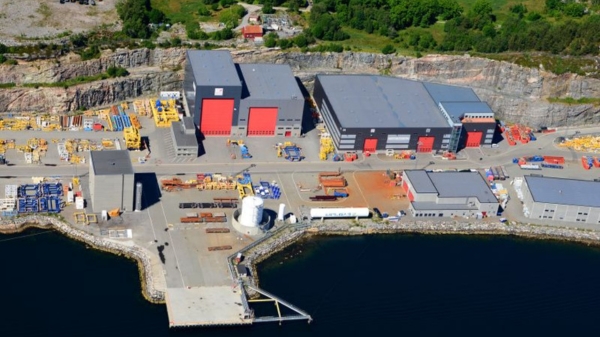
|
Molgas and NorSea Logistics reopen LNG facility in Kristiansund
The reopened facility will supply LNG and bio-LNG to dual-fuel vessels operating in Norwegian waters. |
|
|
|
||
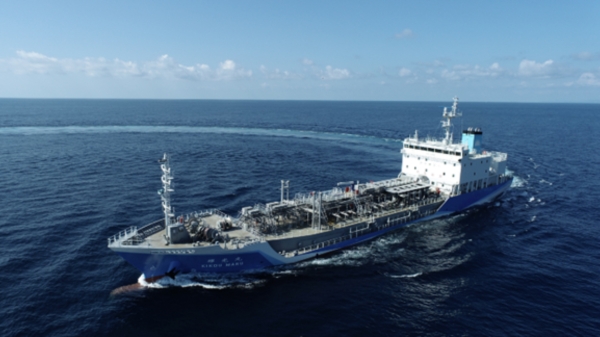
|
Hydrogen-fuelled tanker achieves top rating in zero-emission programme
Kikou Maru becomes first coastal vessel to secure financing under DBJ-ClassNK decarbonisation initiative. |
|
|
|
||
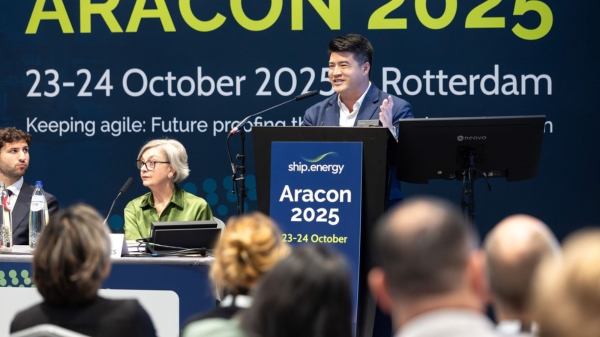
|
TFG Marine calls for ISO 22192 alignment in ARA MFM rollout
Company urges consistency as Rotterdam and Antwerp prepare mass flow meter implementation. |
|
|
|
||
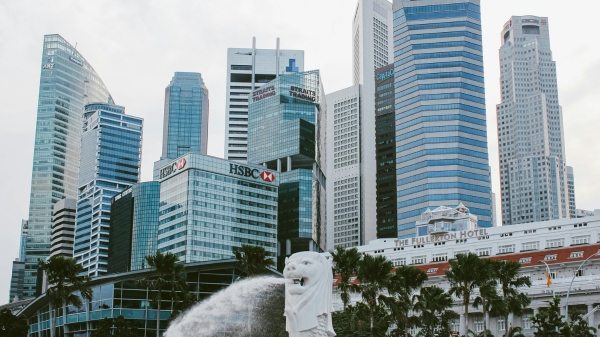
|
Peninsula renews $400m Singapore credit facility as part of $1.5bn funding capacity
Bunker supplier extends banking arrangement with eight-bank syndicate, including accordion option. |
|
|
|
||
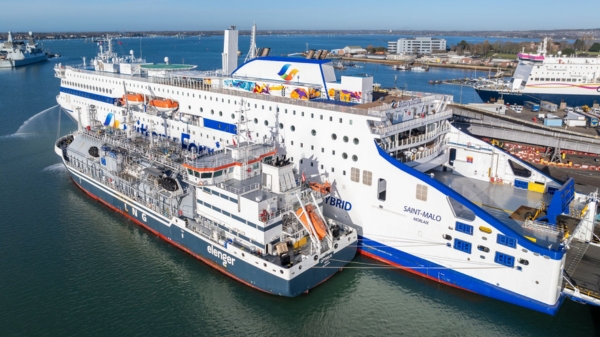
|
Titan delivers first liquefied biomethane to Saint-Malo ferry in Portsmouth
Optimus tanker supplies Brittany Ferries' vessel with biomethane at UK port. |
|
|
|
||
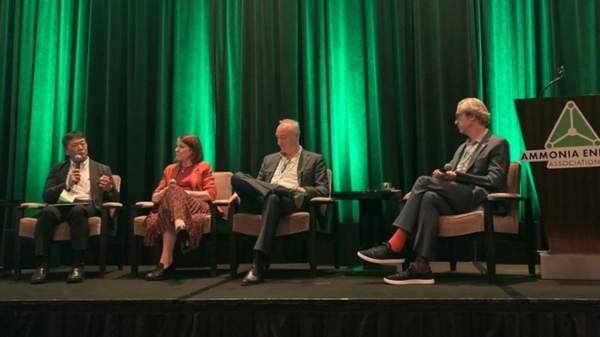
|
MOL outlines ammonia fuel strategy at Houston conference
Japanese shipping company discusses terminal acquisition and dual-fuel vessel plans at industry gathering. |
|
|
|
||
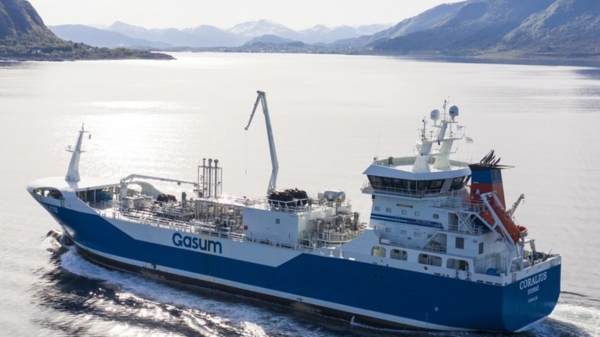
|
Gasum highlights how bio-LNG fleet generates compliance surplus
Energy firm's four gas-powered vessels generate regulatory surplus for pooling service participants. |
|
|
|
||
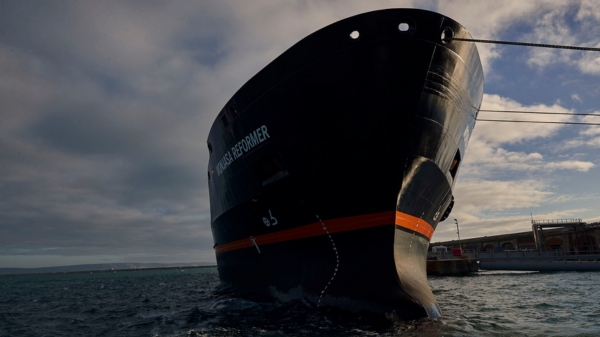
|
Monjasa secures NATO fuel supply contract across five operational areas
Danish marine fuel supplier wins one-year framework deal with two-year extension option. |
|
|
|
||
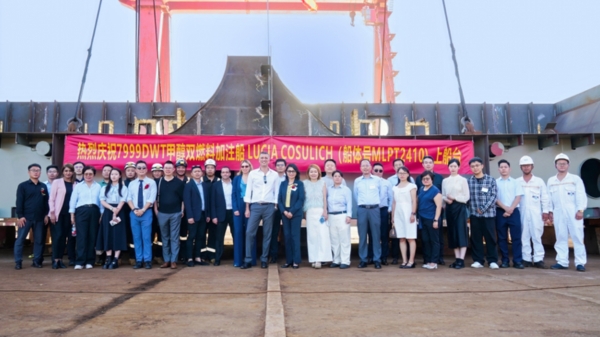
|
Fratelli Cosulich lays keel for second methanol-ready bunker vessel
Ceremony held to mark the beginning of the tanker's assembly phase. |
|
|
|
||
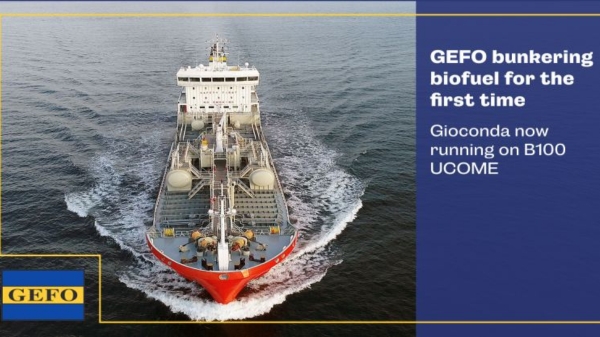
|
GEFO bunkers biofuel for first time as Gioconda runs on B100 UCOME
German shipping company takes maiden step into biofuel bunkering with used cooking oil biodiesel. |
|
|
|
||
| Gasum secures LNG licence for Belgium [News & Insights] |
| Gasum ups LNG supply capacity in ARA [News & Insights] |
| Gasum performs maiden LNG delivery in France [News & Insights] |
| Gasum starts biogas delivery trials to Finnish Border Guard [News & Insights] |